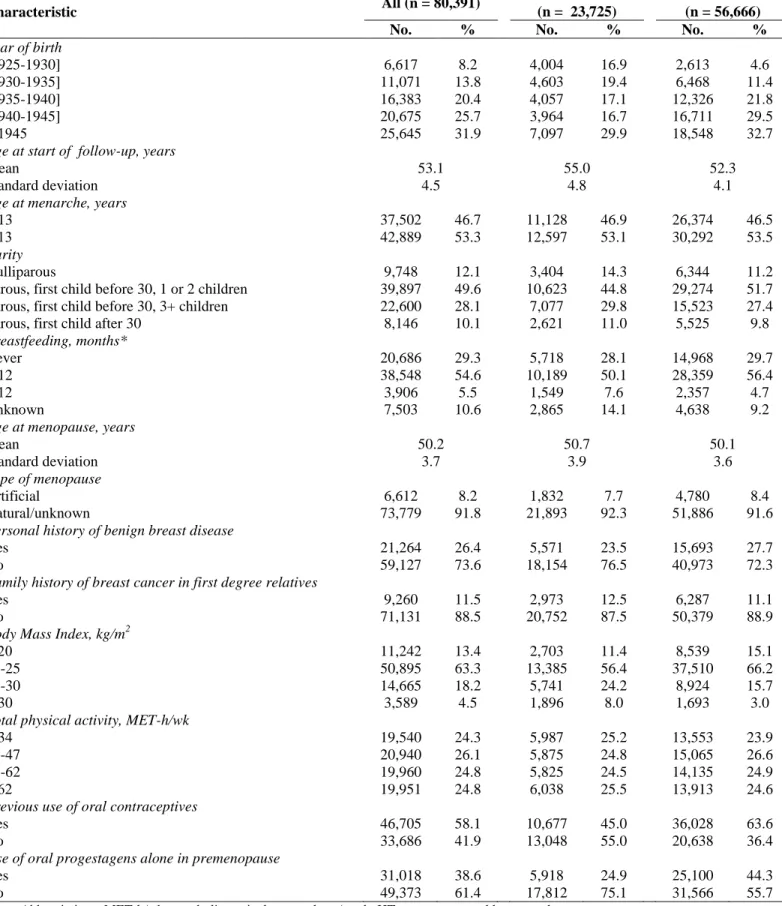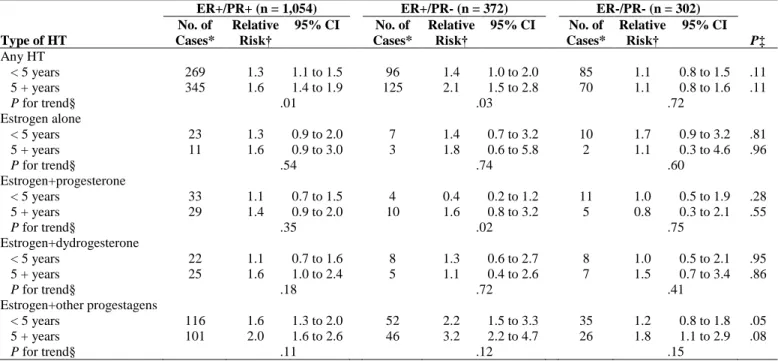Use of different postmenopausal hormone therapies and risk of histology- and hormone receptor-defined invasive breast cancer.
Texte intégral
Figure




Documents relatifs
Mais alors, caressant la tête de la petite Beth qui était venue se réfugier contre sa mère, comme en présence d'un danger réel et qui la rendait impuissante,
participant data from 12 studies, we found that greater fatigue was independently associated with female sex, depression, longer time since stroke and disability.. The regression
Si changer la direction et l’agencement des structures de négociation a été une priorité essen- tielle des deux bords politiques australiens depuis le milieu des années 1980,
Supplemental Table 2: Antibodies used in the
Consistent with results obtained for younger adults for Fitts’ task ( Vernooij et al., 2016 ), muscular coordination of older adults show increased levels of variability around
It should be mentioned that no significant differences, in terms of correlation between RIP140 mRNA or protein expression and patient survival (OS or DFS), were observed
In this paper, we propose an original and generic multi-feature probabilistic detector (MFPD) and apply it to real-time QRS complex detection under noisy conditions. The MFPD
At 550 K in the Northern Hemisphere, and at 650 K in both hemispheres, the observed Lyapunov expo- nents show a strong annual cycle and the regression model captures much of
